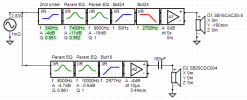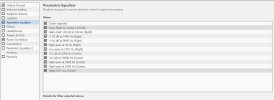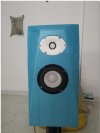Vineethkumar01
Well-Known Member
Hi
I found this informative thread by Patrick Bateman (He posts gazillions of posts regarding waveguides and other related things on diyaudio)
Even though the above thread is in the context of car audio, I find the subject matter relevant to home audio as well.
In a nutshell, his opinion (seems to be the opinion of other well known people including Earl Geddes too) seems that diffraction-related effects makes themselves known at higher volumes causing listening fatigue etc.
So the amount of care we put into acoustic design of the speaker cabinet (or the cabinet shape and baffle shape and other things which influence radiation characteristics of the drivers) will really matter especially at higher playback levels (Just considering the speaker design aspect alone here and not considering effects of room treatment and other things).
(also posting link to Geddes site for anyone interested in learning about his perspectives to all things audio: http://www.gedlee.com/Papers/papers.aspx)
Thanks
Vineeth
I found this informative thread by Patrick Bateman (He posts gazillions of posts regarding waveguides and other related things on diyaudio)
Even though the above thread is in the context of car audio, I find the subject matter relevant to home audio as well.
In a nutshell, his opinion (seems to be the opinion of other well known people including Earl Geddes too) seems that diffraction-related effects makes themselves known at higher volumes causing listening fatigue etc.
So the amount of care we put into acoustic design of the speaker cabinet (or the cabinet shape and baffle shape and other things which influence radiation characteristics of the drivers) will really matter especially at higher playback levels (Just considering the speaker design aspect alone here and not considering effects of room treatment and other things).
(also posting link to Geddes site for anyone interested in learning about his perspectives to all things audio: http://www.gedlee.com/Papers/papers.aspx)
Thanks
Vineeth
Last edited:





